Newsletters
October 2023 Edition
Last Stand for Internal Combustion, or New Lease on Life?
Even the most ardent battery electric vehicle (BEV) advocate will admit that vehicles will be internally combusting on our roads at least for the next generation. By the end of that time, it is very likely that any carbon budget scenario set out under the Paris Agreement for limiting global warming will be blown.
Therefore, what happens over the next generation in the engine cylinder matters. The battery champions – if reduced emissions are truly their goal – should therefore also be championing biofuels to reduce carbon emissions today.
The proposed Euro 7 regulation is, as I write, being mauled by the beast of European politics. Even if it survives, it may not regulate the pollutants from biofuels that really matter for air quality. In practice, even Euro 6 vehicles certified under Real Driving Emissions are generally emitting below the legal limits, whether it is for nitrogen oxides from diesel or particle number from gasoline. One might say that reducing the limits and widening the test boundaries proposed under Euro 7 are largely academic. What may be more important are unregulated pollutants often associated with innovative biofuels.
Emissions Analytics, therefore, studied, with the University of Oxford, a range of real-world emissions of volatile organic compounds (VOCs), with a particular focus on acetaldehyde. This is a toxic compound is associated with respiratory illness and cancer in humans. Concern arises as it is believed that the oxygen rich components of biofuels, arising from the agricultural ‘bio’ elements, can lead to acetaldehyde formation under combustion.
We tested for this by combining a Sensors’ PEMS unit with our proprietary, proportion-dilution system sampling onto thermal desorption tubes, which are then subjected to analysis using two-dimensional gas chromatography and time-of-flight mass spectrometry. Geofencing allows sampling urban, rural and motorway driving onto separate tubes. The approach allows for accurate separation and identification of acetaldehyde, and quantification at the parts-per-billion level.
Contrary to expectations, over four late model years cars tested on both E0 and E10 gasoline, no acetaldehyde was detected, even at the low levels possible by this technique. The fuels were specifically blended to ensure the correct proportions of ethanol, so we can be confident of this result in this ethanol concentration range.
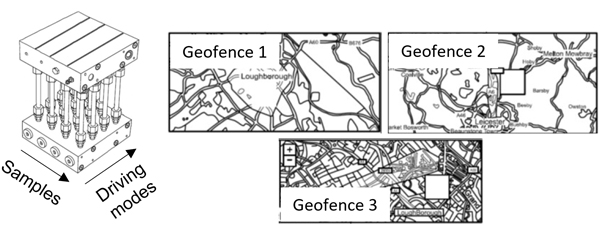
It is an encouraging result for this type of biofuel. As the blends and feedstock can vary significantly between such products, however, it is necessary to test each case, and not just for acetaldehyde but also for a wider family of such toxic VOCs. Using this enhanced PEMS system, hundreds of such compounds can be tested for, to validate the low-emissions credentials of biofuels.
In short, whether the internal combustion engine eventually gets dumped in the landfill of history, or endures, makes no difference to whether we should dive deeper into in-use emissions testing, and redouble our efforts to ensure that all data is information by real-world, portable, on-vehicle testing.
Nick Molden Founder & CEO of Emissions Analytics
Learn about Emission Analytics research and services at www.emissionsanalytics.com
Sensors Celebrates a New Patent
We celebrated the issuing of a new patent for Particle Concentration Analyzing System and Method at a company gathering on Friday, September 5, 2023. Sensors, Inc. is listed as the Assignee for the patent which was issued on June 27, 2023 A brass plaque engraved with the first page of US Pat. No. 11,686,6660 will join the other patent plaques on display in the lobby of the Saline, Michigan headquarters. Sensors, Inc.’s CEO and President Joe Morrill presented the patent plaque to Dr. David Booker, Sensors’ Chief Technology Officer. Company employees at our Saline, Michigan location gathered to celebrate with Dr. Booker. The patent number will be added to the labels on the Automotive Particle Bench (APB®).
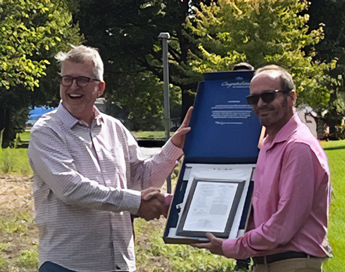 Left to right: Joe Morrill (CEO and President, Sensors, Inc.) and Dr. David Booker (Chief Technology Officer, Sensors, Inc.)
Left to right: Joe Morrill (CEO and President, Sensors, Inc.) and Dr. David Booker (Chief Technology Officer, Sensors, Inc.)
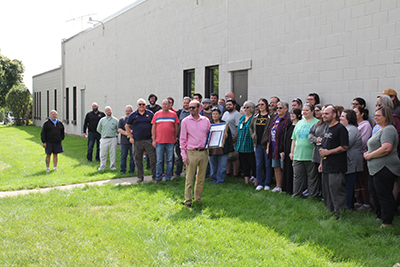 Sensors’ Saline Michigan employees join in celebrating the latest patent.
Sensors’ Saline Michigan employees join in celebrating the latest patent.
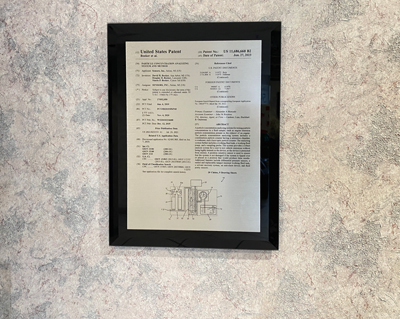 The latest patent joins Sensors, Inc.’s other patents in the lobby of the Saline, Michigan headquarters.
The latest patent joins Sensors, Inc.’s other patents in the lobby of the Saline, Michigan headquarters.
The SEMTECH HI-FLOW 2 Meets American Carbon Registry Regulations
Sensors, Inc., a leading provider of gas emission measurement solutions, is thrilled to announce the SEMTECH HI‑FLOW 2, is the only high flow sampler to meet the rigorous requirements outlined by the American Carbon Registry (ACR) for its "Methodology for the Quantification, Monitoring, Reporting and Verification of Greenhouse Gas Emissions Reductions and Removals from the Plugging of Orphaned Oil and Gas (OOG) Wells". With methane-specific direct measurement and an unparalleled ability to make precise methane readings of less than 1 gram per hour, the SEMTECH HI-FLOW 2 positions Sensors, Inc. as the preferred choice for accurate and compliant methane emissions monitoring.
As the demand for effective climate change mitigation intensifies, the American Carbon Registry has established this methodology which “provides the eligibility requirements and accounting framework for the creation of carbon credits from the reduction in methane emissions by plugging OOG wells.” Methane, a potent greenhouse gas, significantly contributes to global warming. Accurate measurement and control of methane emissions are vital for organizations aiming to reduce their carbon footprint, achieve sustainability targets, and now this framework offers clear quantification goals needed for the carbon credit marketplace.
Sensors, Inc.’s SEMTECH HI-FLOW 2 high flow sampler is at the forefront of methane emissions monitoring technology. Designed with advanced features and cutting-edge gas sensing technologies, it offers a fully turn-key solution enabling background methane measurements below 1ppm to be measured and leak rates to be accurately quantified from <0.001 Kg/hr up to ca. 25 Kg/hr. This exceptional capability empowers companies to effectively measure, monitor, and verify mitigation efforts aligning with the parameters set by the ACR and beyond. The SEMTECH HI-FLOW 2 high flow sampler’s compliance with ACR regulations is a testament to its superior performance and reliability. With its robust construction, high-volume vacuum sampling fan, and state-of-the-art technology, the SEMTECH HI-FLOW 2 ensures seamless adherence to ACR requirements. Real-time data collection and post processor analysis provide organizations with actionable insights to proactively manage and mitigate methane emissions.
"We are proud to announce that the SEMTECH HI-FLOW 2 is the only high flow sampler capable of meeting and exceeding the parameters set by the American Carbon Registry for methane-specific monitoring,” said Dr. David Booker, Chief Technology Officer at Sensors, Inc. "This compliance with the ACR regulations reflects our commitment to developing innovative solutions that address the pressing environmental challenges we face. With the SEMTECH HI-FLOW 2, organizations can accurately measure and verify their methane emissions mitigation efforts, contributing to a more sustainable future."
As organizations worldwide strive to meet increasingly stringent methane emissions regulations, Sensors, Inc.’s SEMTECH HI-FLOW 2 high flow sampler sets the industry standard as the go-to solution for reliable, precise, and compliant methane emissions monitoring.
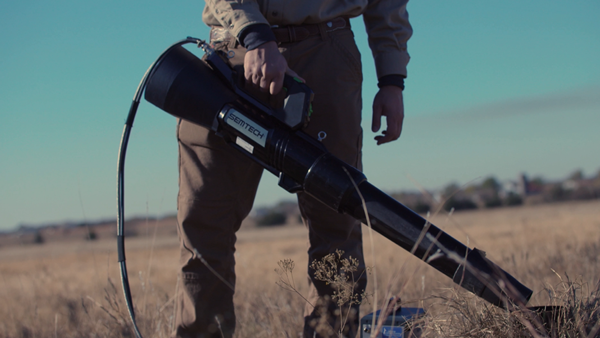
Sean Epps at Heath Consultants remarks, "After a long day in the field, I appreciate that this equipment has been designed with ease of use, dependability, flexibility, and great ergonomics. In the past, I was limited to relatively small leaks; the ability to get instant feedback and accurately quantify much larger leaks (5x) is a game changer. The SEMTECH HI-FLOW 2 is conveniently operated on a handheld, web-based browser using a secure Wi-Fi connection. This direct quantification instrument delivers data we can trust and stand behind."
About American Carbon Registry: The American Carbon Registry (ACR), a nonprofit enterprise of Winrock International, was founded in 1996 as the first private voluntary greenhouse gas registry in the world. A mission-driven institution named for philanthropist Winthrop Rockefeller, Winrock believes that climate change will have a profound impact on the poorest populations around the world and that markets are the most effective path to mobilize actions to reduce emissions. Winrock operates ACR to create confidence in the environmental and scientific integrity of carbon offsets in order to accelerate transformational emission reduction actions. As a pioneer in harnessing the power of markets to improve the environment, ACR has set the bar for offset quality that is the market standard today and continues to lead market innovations.
Learn more about the SEMTECH HI-FLOW 2 high flow sampler and its capabilities for methane emissions monitoring at https://sensors-inc.com/Products/Custom_Solutions/SEMTECH_HI-FLOW_2.
Interested in a demo? Call or email Sensors today!
"The HI-FLOW 2 gas analyzer from Sensors, Inc. excels in accuracy and offers remarkable mobility. This feature proves invaluable, particularly when dealing with challenging environments such as orphan well sites. Sensors, Inc.’s reputation for dependable solutions and commitment to addressing industry-specific needs makes their team an indispensable partner for the efficient emissions analysis our business requires in varied environments.”
Brooke Swain
RebellionEnergySolutions.com
Manny Robles, Sensors’ VP of Sales and Marketing and David Booker, PhD, Sensors’ CTO, attended the 10th annual CH4 Connections conference in Fort Collins, Colorado on October 4-5, 2023. The conference was hosted by GTI Energy and Colorado State University Energy Institute and was the most attended meeting of the CH4 Connections event. Speakers addressed current research on methane emissions, technologies to detect and mitigate emissions, policy and regulatory frameworks, and business opportunities. The conference highlighted the need for accurate quantification of methane emissions. 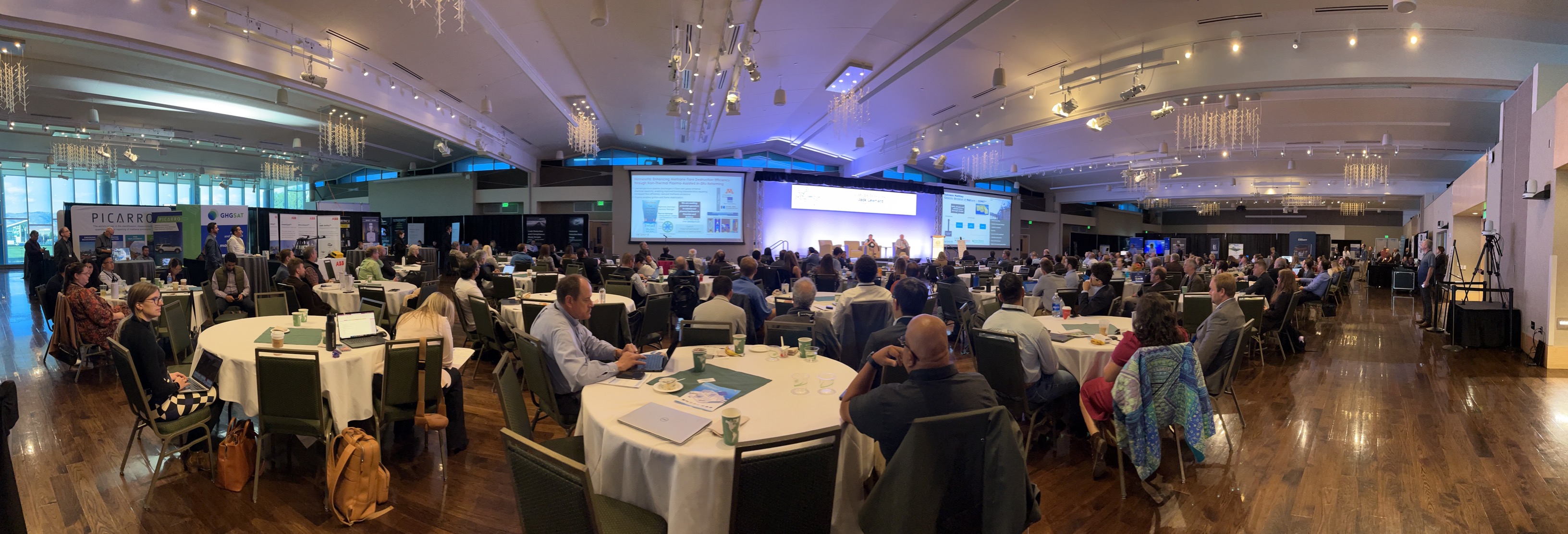
Euro 7 Update
Euro 7 is evolving legislation. Sensors, Inc is keeping a close eye on each proposal. Compared to the European Commission’s Euro 7 draft, this new proposal will:
- Lower NOX limits for trucks and light duty vehicles.
- Modify testing requirements (e.g., acceleration, temperature and altitude similar to Euro 6 requirements).
- Delay implementation of Euro 7, meaning cars won’t have to comply with limits until three years after all associated regulation is adopted. For trucks the rules won’t apply until 2030 at the earliest.
On September 25, 2023, The European Council issued a press release. Here are some excerpts:
The Council adopted its position (‘general approach’) on the Euro 7 regulation.
"To accommodate these concerns, the Presidency compromise text deletes the test conditions for M1 and N1 vehicles in Table 1 of Annex III, and it reverts to the Worldwide Harmonized Light Vehicle Test Procedure (WLTP) and Real Driving Emission (RDE) tests as defined in Euro 6e."
"Concerning exhaust emissions from M2, M3, N2 and N3 vehicles with internal combustion engines and internal combustion engines used in these vehicles, the new compromise text removes the emission limit for formaldehyde (HCHO) from the proposed list of emission limits in Table 2 of Annex I. Compared to Euro VI, it contains more stringent limits for emissions measured in laboratory and on road than those laid down in Euro VI."
For more information: Euro 7:
MEPs back new rules to reduce road transport emissions
Euro 7: Council adopts position on emissions from cars, vans, buses and trucks
On the Horizon
Sensors regularly participates in many emissions measurement community activities. From hosting an annual conference that attracts both worldwide regulatory agencies and engine manufacturers to participating in trade shows, there is a wide array of opportunities to meet our team.
Automotive Testing Expo North America
October 24-26, 2023
Suburban Collection Showplace, Novi, MI
ONE Future Methane Initiative and Climate Strategies Workshop
November 1 - November 2, 2023
Houston, TX